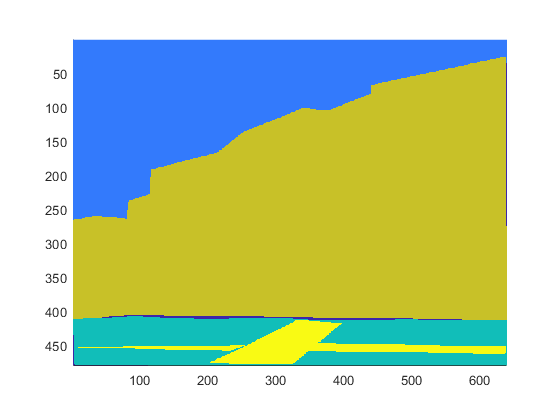countEachLabel
(To be removed) Count number of pixel labels for each class of
bigimageDatastore object
The countEachLabel function of the
bigimageDatastore object will be removed in a future release. Use
the countEachLabel function associated with the blockedImageDatastore object instead. For more information, see Version History.
Description
Examples
Input Arguments
Output Arguments
Tips
You can use the label information returned by countEachLabel to
calculate class weights for class balancing. For example, for labeled pixel data
information in tbl:
Uniform class balancing weights each class such that each contains a uniform prior probability:
numClasses = height(tbl) prior = 1/numClasses; classWeights = prior./tbl.PixelCount
Inverse frequency balancing weights each class such that underrepresented classes are given higher weight:
totalNumberOfPixels = sum(tbl.PixelCount) frequency = tbl.PixelCount / totalNumberOfPixels; classWeights = 1./frequency
Median frequency balancing weights each class using the median frequency:
imageFreq = tbl.PixelCount ./ tbl.BlockPixelCount classWeights = median(imageFreq) ./ imageFreq
